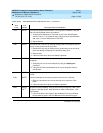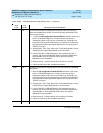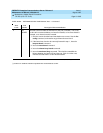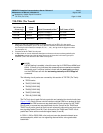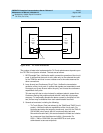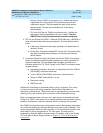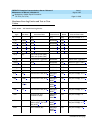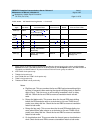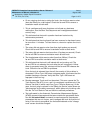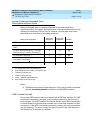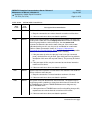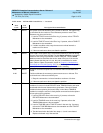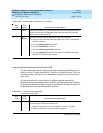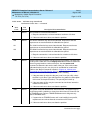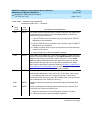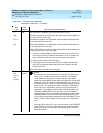
DEFINITY Enterprise Communications Server Release 6
Maintenance for R6vs/si
555-230-127
Issue 1
August 1997
Maintenance Object Repair Procedures
Page 10-1371TIE-TRK (Tie Trunk)
10
e. On an outgoing wink-start or delay-dial trunk, the wink time was too short
(less than 80ms) for a valid signal. Check the far-end PBX to ensure a
translation match at both ends.
f. This is a software audit error that does not indicate any hardware
malfunction. Run the Short Test Sequence and investigate associated
errors (if any).
g. This indicates that the trunk in question has been busied-out by
maintenance personnel.
h. This indicates that the circuit pack has been removed or has been insane
for more than 11 minutes. To clear the error, reinsert or replace the circuit
pack.
i. The rotary dial rate was too slow (less than eight pulses per second.)
Check the far-end PBX to ensure a translation match at both ends.
j. The rotary dial rate was too fast (more than 12 pulses per second.) Check
the far-end PBX to ensure a translation match at both ends.
k. The time between digits was too short (less than 300ms). Check the
far-end PBX to ensure a translation match at both ends.
l. This indicates that the trunk is still seized with an incoming call. The
far-end PBX is not releasing the trunk after the call is dropped. A Minor
alarm is generated every four minutes until the far-end PBX releases the
trunk. Check the far-end PBX for problems.
Once the trunk is released from the call, the severity of this problem is
decreased. If Error Type 1025 does not appear again, this means that the
problem has been corrected. Verify that Error Type 1025 does not
reappear in the Error Log.
m. Reorder message. Trunk could not be seized. This error causes the Tie
Trunk Seizure Test (#73) to run, and it is considered a problem only if the
Seizure Test fails (in which case Error Type 1793 also shows up). In this
case, the trunk may be placed in the "Ready-for-Service" state (shown as
"disconnected" by the status command), which allows only incoming calls.
Run the Tie Trunk Seizure Test and follow its outlined procedures.
n. Test calls made by the Automatic Transmission Measurement System
(ATMS) returned measurements that were outside the acceptable limits.
Use the list testcall detail command to examine specific transmission
parameters that are out of spec, and investigate the trunk for that kind of
noise. If the noise is acceptable, the limits administered on the "change
trunk" screen should be changed.



